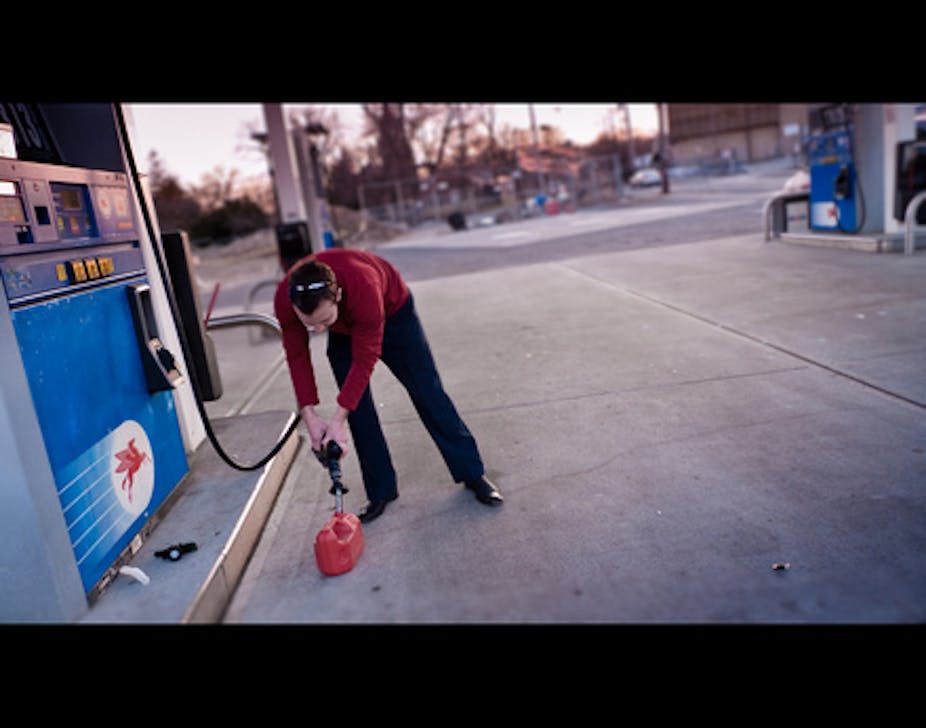Government modelling has given us a rough idea what a carbon tax could cost households, but will the burden be borne fairly? Whether we have a carbon tax or climate change, poor households will likely pay more.
National Economics has provided indicative costs for a carbon price of $25 a tonne, based on the carbon component of 20 different household types. At this price, a carbon tax will cost households with average consumption patterns a further 1.6 % of their annual expenditure, or $805.
If this is utility adjusted (where costs and benefit are weighted according to the relative prosperity of those receiving the benefit or bearing the cost) this extra expenditure would be 0.7% or $351.
It is assumed that this carbon price raised from high carbon emitting industries will be passed on to consumers (highly likely) and that the consumers don’t substitute to other goods and services with a smaller carbon content and therefore a lower price (likely to happen for some households in some circumstances).
Some may argue this is a sizeable impost, but how does it compare to the cost of not having a carbon tax?
Carbon emissions have resulted in a world average post industrial temperature rise of 0.8⁰C. Even if all greenhouse gas emissions cease now, the temperature is set to go to 2⁰C, a level generally agreed that it is unsafe to go beyond.
Life will change for many as we move towards that 2⁰C rise, set to occur in less than 20 years time if emissions are stabilised now.
For example, with rainfall changes such as lower rainfall and higher evaporation rates in SE Australia, and more extreme weather, food production will continue to become less certain and the cost of food will rise, a world trend already becoming more noticeable.
At 450 parts per million of greenhouse gases in the atmosphere, which will lead to a likely risk of a 2.1⁰C rise in world temperature, there is still a 2% chance that the temperature could rise up to 6⁰C (a figure at the extreme end of a possible normal distribution bell curve).
A temperature rise of 5⁰C and over is equivalent to the amount of warming which occurred between the last ice-age and today, the impact of which is far outside human experience.
Comparing the cost to households of future climate change with a present carbon price is very difficult: there are many uncertainties. However, it is clear that the trend of increasing prices and reduced welfare will be difficult for some people, even with small temperature rises.
The number of people adversely impacted will expand as the temperature rises. An extra $805 for the average household is a small price to pay to contribute to a world response to reduce emissions. By comparison, the GST costs the average household approximately $4,571 annually.
However, a carbon price will not impact on all households equally. Low income households will be disproportionately adversely affected as they spend a higher proportion of their income on direct energy (energy in the home and petrol).
A carbon price of $25 will cause an increase in annual expenditure of 2.3% for people with a very low income compared with an extra 1.5% for people with a high income, or utility adjusted only 0.4%.
Without compensation, a carbon price will be a lot more burdensome for low income households who are less able to move from higher carbon products, the changeover price (for example, to a more energy efficient fridge) being beyond their budgets.
A high income household may well choose to just pay the extra cost of products as the price rises are small when compared to their income.
The comparison doesn’t stop there though. A poor person has a carbon footprint of 22.3 tonnes annually while a rich person has a carbon footprint of over double this – 57.8 tonnes.
True equity principles would dictate that a person should pay in proportion to carbon usage and that additional measures should be placed on the carbon content of luxury items.

